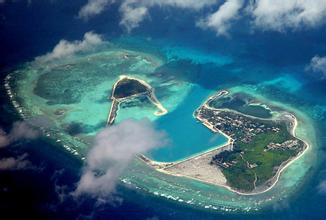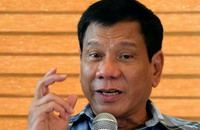With its varsities gaining better rankings, the most populous nation is set to become the world’s leading learning destination.
 HIGHER education in China can perhaps be traced to the establishment of a Taixue (the Imperial Academy) in the capital city of China during the Western Han Dynasty (206BC to 9AD).
HIGHER education in China can perhaps be traced to the establishment of a Taixue (the Imperial Academy) in the capital city of China during the Western Han Dynasty (206BC to 9AD).Before this there were no formal organised institutions of higher learning. Only private education was available. Thus taixue became the highest educational institution in imperial China.
The earliest taixue education was based on legalist and Confucian ideals and philosophies, but later it evolved into one that was mainly Confucian-based when Emperor Wu (141BC to 87BC) decided to adopt Confucianism as the state doctrine. Imperial University was the first Confucian-based institution established in 124BC.
The taixue system later evolved into what was known as Gouzijian (Directorate of Education or National Central Institute of Learning). This occurred during the Western Jin Period (265 to 316).
Under the gouzijian system, higher education was stratified and segmented.
The system of admission and enrolment of students to these different levels and segments was based on social standing.
This traditional system of higher education was in place for the next 2,000 years before it underwent structural reforms into “modern universities” that we know of today.
In the late 19th century, several traditional institutions of higher learning sought permission from the Emperor to “modernise”.
However, Peking University is generally regarded as the first “modern university” in the country.
This was in 1898 and the term daxue for such institutions was adopted.
The university was first known as the Imperial Univer-sity of Peking before it became the present Peking University.
The reformation came about when events that took place in China in the mid-1800s opened up the country to the rest of the world.
Varsities closed
Even so, these new centres of learning experienced a period of great turmoil during China’s Cultural Revolution of 1966 to 1969.
In the early months of the revolution, schools and universities were closed.
Though the revolution was officially over by 1969, its activities however continued until 1971 and most universities did not reopen until 1972.
From the 1980s onwards, higher education in China underwent further reforms.
In 1995, Project 211 was initiated to raise research standards of about 100 universities by the 21st Century, hence the term Project 211.
Project 985 launched in May 1998 by President Jiang Zemin, initially targeted 10 universities. They were given the necessary support to make them all world-class institutions. The number of such universities has now gone up to 39.
The project has also resulted in the creation of what is known as the C9 League of universities. The aim is to create a league that is equivalent to the Ivy League of the United States.
The C9 universities are Fudan University, Harbin Institute of Technology, Nanjing University, Beijing University, Shanghai Jiao Tong University, Tsinghua University, University of Science and Technology of China, Xi’an Jiaotong University and Zhejiang University.
China spends about 4% of her GDP on education and currently spends about US$250bil (RM1.03tril) a year on human capital development.
There are about 2,900 universities and colleges in China with a total enrolment of some 37 million students. Close to 380,000 international students from 203 countries studied in China in 2014.
The bulk of them were from South Korea, the US, Thailand, Russia, Vietnam, India, Indonesia, France and Pakistan.
Currently only about 10% of foreign students receive Chinese government scholarships and the rest are mainly self-funded.
However this is expected to change as China aims to attract 500,000 international students by 2020 and providing more scholarships is a way to support the target.
The 2016 Higher Education System Strength Rankings (by Quacquarelli Symonds - QS), placed China at eighth worldwide with China’s strongest score being in the economy metric.
The eighth place ranking is the highest for Asia with South Korea and Japan placed at the ninth and 10th position respectively.
The first seven places were taken by the US, UK, Germany, Australia, Canada, France and the Netherlands respectively. Malaysia is placed 27th, behind Taiwan, Hong Kong and Singapore.
This ranking is an assessment of the overall education system strength and flagship university performance, alongside factors relating to access and funding.
Also, according to the QS World University Rankings of 2015/16, of the world’s top 800 universities, four of the top 100 are in China.
They are Tsinghua University (ranked 25), Peking University (ranked 41), Fudan University (ranked 51) and Shanghai Jiao Tong University (ranked 70) with Tsinghua being third in Asia after the National University of Singapore and the Nanyang Technological University of Singapore (ranked 12th and 13th respectively).
Tsinghua is even ahead of universities in South Korea, Japan, Hong Kong and Taiwan. Xiamen University, placed 17th in China, fell in the 401-410 band.
For Malaysian public universities, Universiti Malaya (UM) is placed 146 while Universiti Sains Malaysia (USM) is ranked 289. Universiti Teknologi Malaysia (UTM) is at 303 while Universiti Kebangsaan Malaysia, 312 and Universiti Putra Malaysia, 331. None of Malaysia’s private universities appeared in the list.
According to the Times Higher Education World University Rankings of 2015-2016, two universities in China made it to the world’s top 100 out of the 800 listed.
The two were Peking University (ranked 42) and Tsinghua University (ranked 47), with Peking being ahead of universities in Japan, Hong Kong and South Korea.
Tsinghua was ahead of even the best in South Korea.
The best Malaysian university listed was UTM, placed in the number 401-500 band, similar to that of Xiamen University which has a branch campus in Sepang, Selangor.
Most of the British universities with branch campuses in Malaysia are within the world’s top 200.
Research performance
The Academic Ranking of World Universities (ARWU), also known as the Shanghai Jiao Tong World University Ranking, ranked 500 universities worldwide based mainly on their research performance.
For 2015, four universities in Japan did better than those in China.
The top university in Japan was the University of Tokyo (ranked 21) while the top four in China, according to alphabetical order, were Peking University, Shanghai Jiao Tong, Tsinghua and Zhejiang University. They were placed in the number 101-150 band.
Malaysia’s top university, according to ARWU, was UM, placed in the number 301-400 band, while USM, the next best, was placed in the number 401-500 band. Xiamen University was placed in the same band as UM.
In a span of about 120 years, from having only one “modern” university, there are now about 2,900 universities and colleges in China. Several are world-class and are ready to compete with the best in the US and the UK.
Within the next decade, two universities in China may be ranked among the world’s top 10.
To achieve this, the government is going to great lengths to attract leading scholars, especially overseas Chinese scholars, to take up academic appointments at its leading universities.
Many universities in China are not only focusing on developing technologies that are competitive, but are doing so in areas like business education. Improvements have been by leaps and bounds.
Under such a scenario, what effects would the above have on world higher education in general and the trend of higher education pursuits by the global Chinese diaspora in particular?
It is an open secret that China encourages successful overseas Chinese to return to China to help in its development.
Even though the country is now the world’s second largest economy, there are still many spheres that need to be developed before China can claim to be at par with developed nations of the West.
One strategy would be to attract the best foreign students to study in China.
Upon graduation, these students can then be enticed to stay on to help develop the country.
Even if the graduates decide to return to their home country, their positive experiences while in China and the local Chinese network of friendship (guanxi) that the students have established are assets that will to some extent, influence their home countriesfavourably in their dealings with China.
Having foreign students on campus also has the added benefit of excha-nge and enrichment of experiences and ideas between local students and those from different parts of the world.
Such a strategy is not new as it has been practised by countries of the West even though these countries have their own bright students.
That is one reason why the West is now so strong and advanced, especially in the area of science and technology.
This approach of attracting the best foreign students can only be successful if an excellent system of higher education is in place, and China is doing just that.
As a start, China is also increasing the number of scholarships for foreign students.
For example during the 18th ASEAN-China Summit held in Kuala Lumpur last November, China’s Premier Li Keqiang made a commitment that China will increase the number of government scholarships for Asean countries by a thousand over the next three years.
Incentives
On a global scale such efforts may not seem much, but China might introduce innovative incentives to attract the best foreign students to its shores.
The country might just be waiting for the right moment to do so.
Like all other projects launched, once a decision is made and the time is right, China would go all out to implement the idea in a big way.
The soft power strategy outlined above, if introduced, would have a greater impact in countries with a large overseas Chinese population - especially in countries where these students are marginalised with limited access to higher education.
Together there are close to 27 million overseas Chinese living in the Asean region. This is about half the total number of overseas Chinese worldwide.
China may have the edge over the West in attracting these overseas Chinese students as many of these students would be familiar with China’s culture and language.
However it must also be highlighted that presently in China, some university courses are already being taught in English.
From the economic perspective, the cost of higher education in China is relatively cheap compared to those in the West.
Depending on the programme of study, the location of the institution, the type of accommodation sought, and the food consumed, the cost can be as low as US$4,000 (RM16,000) per year.
However it can also be at US$10,000 (RM40,000) per year, making it less affordable to those from poorer nations.
Nonetheless, even now, , studying in China is already a good option.
Doing so not only allows one to receive a world-class education at an affordable cost, it also provides the opportunity for one to establish vast professional and business networks.
These networks are certainly beneficial in a world that has predicted that China would be the largest global economy and a superpower in the not too distant future.
By Dr Lim Koon Ong
The writer is a former Universiti Sains Malaysia deputy vice-chancellor, and is presently an emeritus professor there.
Related posts
Dec 17, 2013 ... Hong Kong ranked third in Maths, scoring 561, while Japan was ranked ... Are
the Chinese cheating in PISA or are we cheating ourselves?
May 20, 2015 ... ... Assessment (PISA) and the Trends in International Mathematics and ... schools
are scoring top grades for science and maths in the UPSR.
Feb 27, 2016 ... May 20, 2015 ... As a result of participating in ASTI's Science Fair for Young
Children, Tamil schools are scoring top grades for ... What is PISA?


 Fall from grace: Lim, who is facing two charges of corruption alongside businesswoman Phang (left), will continue as Chief Minister with the full support of his party. (Inset) The prosecution team is led by Attorney-General Tan Sri Mohamed Apandi Ali.
Fall from grace: Lim, who is facing two charges of corruption alongside businesswoman Phang (left), will continue as Chief Minister with the full support of his party. (Inset) The prosecution team is led by Attorney-General Tan Sri Mohamed Apandi Ali.









